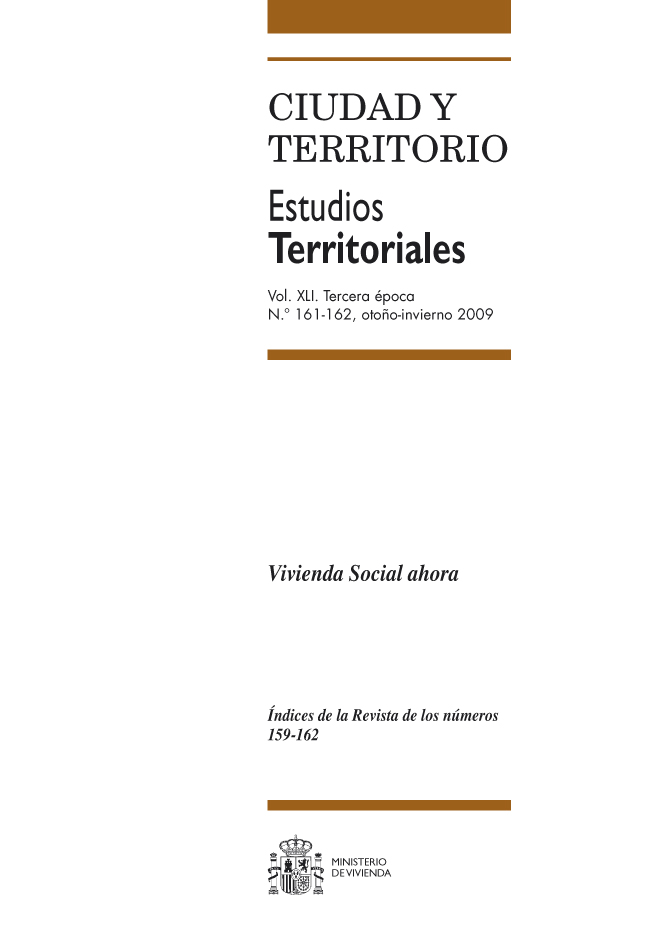Turning Point 1946-1956: Social Housing for the Middle Class
Abstract
The author tells of how Miguel Fisac won the Madrid College of Architects prize for ‘Economic Housing’ with
his ‘Linked Housing’ project in 1949 and of how five years later a group of architects that included Oiza and
Romany put forward their project for three huge blocks ten stories high and 170 m. long as an answer to
the problem of middle class housing.
Social Housing, it is here said, can be approached in a variety of ways. Studying how legislation fixed access
to the same might be one, how it was in fact built another and yet again how it sought to bring in a certain
modernity or safeguard craftsman-like traditions others again. This paper tries to ascertain how the need
for such housing shifted from that of providing economically viable shelter to one of housing a burgeoning
middle class.
Downloads
Downloads
Published
How to Cite
Issue
Section
License
Copyright (c) 2009 Carlos Sambricio

This work is licensed under a Creative Commons Attribution-NonCommercial-NoDerivatives 4.0 International License.
Considering the provisions of the current legislation on Intellectual Property, and in accordance with them, all authors publishing in CyTET give -in a non-exclusive way and without time limit- to the Ministry of Transport, Mobility and Urban Agenda the rights to disseminate, reproduce, communicate and distribute in any current or future format, on paper or electronic, the original or derived version of their work under a Creative Commons Attribution-NonCommercial-NoDerivative 4.0 license International (CC BY-NC-ND 4.0), as well as to include or assign to third parties the inclusion of its content in national and international indexes, repositories and databases, with reference and recognition in any case of its authorship.
In addition, when sending the work, the author(s) declares that it is an original work in which the sources that have been used are recognized, committing to respect the scientific evidence, to no longer modify the original data and to verify or refute its hypothesis. Author(s) also declare that the essential content of the work has not been previously published nor will it be published in any other publication while it is under evaluation by CyTET; and that it has not been simultaneously sent to another journal.
Authors must sign a Transfer of Rights Form, which will be sent to them from the CyTET Secretariat once the article is accepted for publication.
With the aim of promoting the dissemination of knowledge, CyTET joins the Open Journal Access (OA) movement and delivers all of its content to various national and international indexes, repositories and databases under this protocol; therefore, the submission of a work to be published in the journal presupposes the explicit acceptance by the author of this distribution method.
Authors are encouraged to reproduce and host their work published in CyTET in institutional repositories, web pages, etc. with the intention of contributing to the improvement of the transfer of knowledge and the citation of said works.








 Enlace a CyTET en Linkedin
Enlace a CyTET en Linkedin